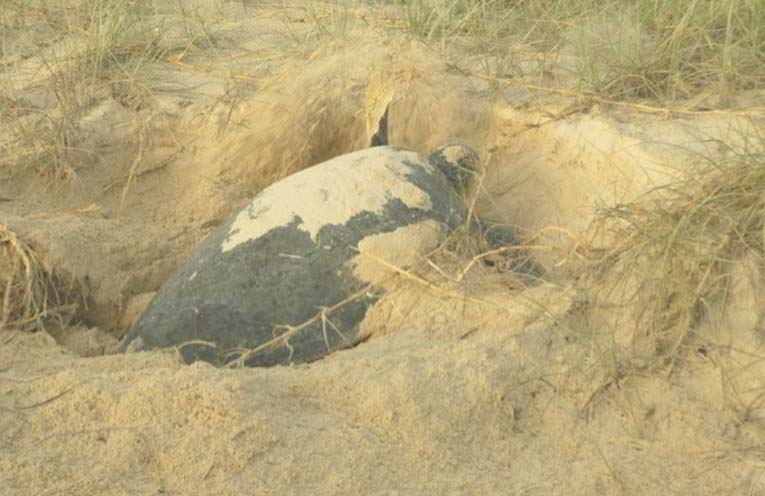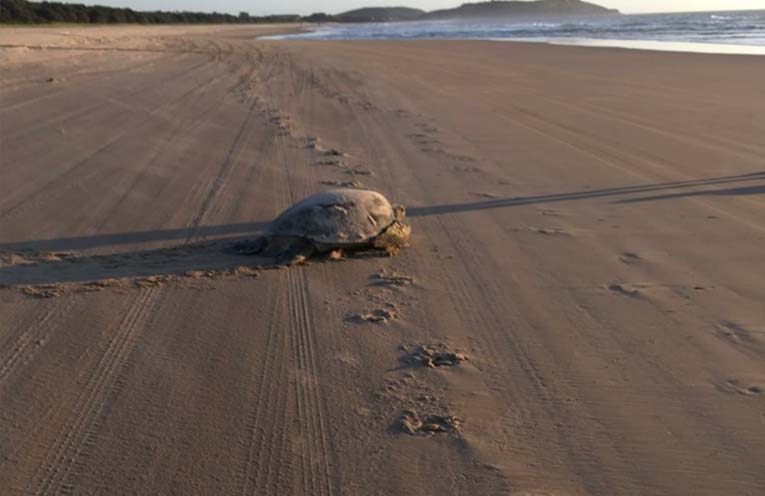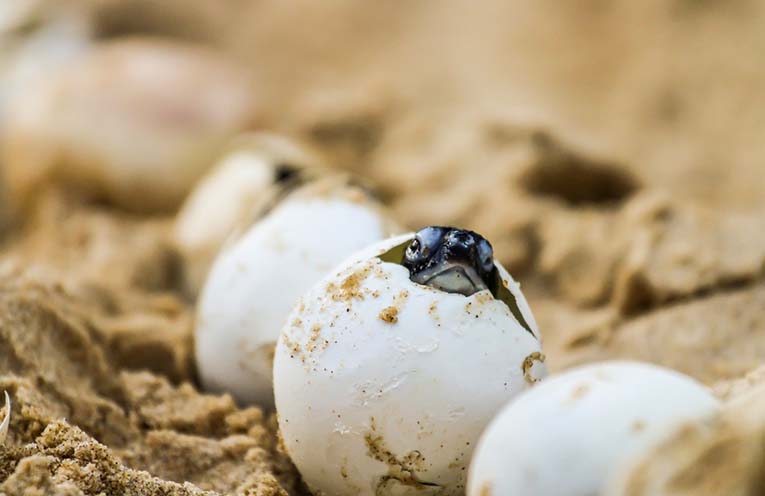
IT’S TIME to be on the lookout for sea turtle activity along the eastern coastline as the 2023 nesting season kicks off.
NSW TurtleWatch’s Project Officer Merryn Dunleavy said walkers, surfers, and swimmers should be aware that they might be sharing the beach with a nesting sea turtle.
 Advertise with News of The Area today.
Advertise with News of The Area today.It’s worth it for your business.
Message us.
Phone us – (02) 4981 8882.
Email us – media@newsofthearea.com.au
“Green and loggerhead turtles are listed as threatened species and are heavily impacted by threats including climate change, so it is important to do what we can to protect each and every nest,” said Merryn.
“If you’re at the beach and spot sea turtle tracks or, even more exciting, discover a nest, please take lots of photos and call NSW TurtleWatch immediately on 0447 877 149 or the NSW National Parks and Wildlife Service (NPWS) on 1300 072 757.”
NSW TurtleWatch Project Officer Holly West, who grew up in Coffs Harbour, told News Of The Area the Coffs Coast had witnessed multiple sea turtles come ashore and lay their eggs over the years.
“One lucky local even spotted a female green sea turtle returning to the ocean on Woolgoolga Back beach in 2019,” Holly said.
“Other key areas that sea turtles have visited are Hearnes Lake, Moonee and Bongil Beach.
“Those nests that have been reported and monitored by volunteers have shown some great hatching success, like a nest on Moonee Beach that had 75 hatchlings and a 81 percent hatch success rate.
“With some amazingly beautiful, untouched coastline, the Coffs Coast may provide suitable habitat for nesting turtles in the face of climate change,” Holly said.
Merryn reminds us of caution and not to intrude on turtle territory.
“It is important that the nests are not interfered with, by people or dogs, so early detection is vital to ensure the protection of these precious nests and the future generation of sea turtles snuggled within,” she said.
The 2022-23 nesting season saw three sea turtle nests laid outside the generally recognised nesting range.
“If this southern nesting trend continues, we’ll need more volunteer citizen scientists than ever before to canvass this large expanse of coastline and report any turtle nest activities.”
Reporting a turtle nest can be the difference between life and death for sea turtle eggs.
Turtle nests are vulnerable to a range of threats including predation, high tides, and erosion.
“The sooner we are notified, the quicker we can get down to the beach and physically protect and monitor the nest until it hatches,” said Merryn.
Anyone can be a citizen scientist and help protect sea turtles and their hatchlings.
All you need to do is walk your local beach early in the morning, as sea turtles generally nest during the night.
Keep your eyes peeled for any tracks in the sand, which are usually 80-100cm wide and can sometimes be mistaken for tire tracks.
Take your phone with you so you can quickly call NSW TurtleWatch or NPWS if you see any signs of turtles, tracks or a nest.
By Andrea FERRARI


